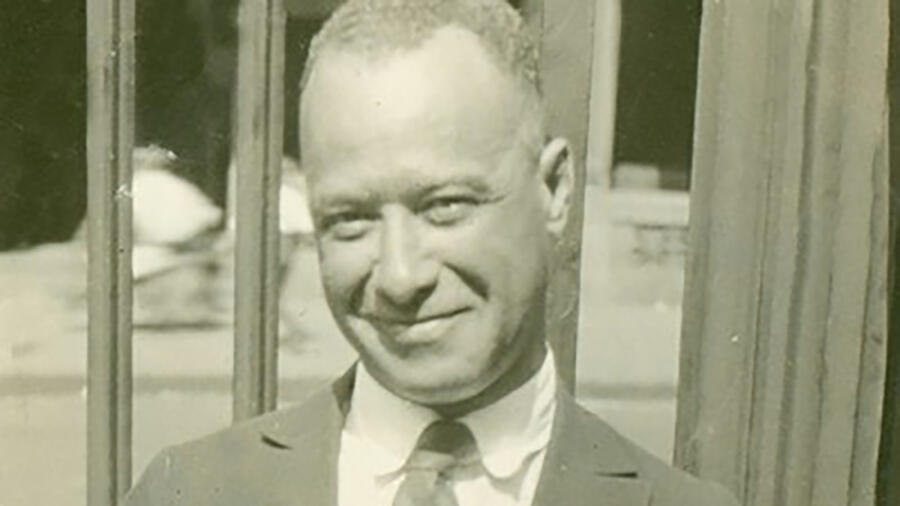James E. Amos wasn’t just one of the FBI’s first Black agents—he was a pioneer who helped shape the future of American law enforcement. His remarkable career spanned over three decades, taking him from the White House to the front lines of the most dangerous investigations of his time.
As the first Black agent to serve publicly for the FBI, James E. Amos’s legacy is one of courage, integrity, and unshakable professionalism.
A Groundbreaking Start in Federal Law Enforcement
In 1921, Amos became the second Black man hired by the Bureau of Investigation, which would later become the FBI. The first, James Wormley Jones, worked undercover. Amos, on the other hand, was assigned to high-profile investigations across the country and quickly became the longest-serving Black agent in the Bureau’s early decades.
He served in major cities including Boston, Chicago, Detroit, New York, and San Francisco—tracking everything from organized crime to foreign espionage.
From Valet to Valued Investigator
Born in 1879, Amos came from a lineage marked by resilience. His father, born into slavery, fought for the Union in the Civil War and later became a police officer in Washington, D.C. That connection led to young Amos meeting President Theodore Roosevelt, a relationship that would shape his future.
Amos served as valet and bodyguard to Roosevelt, even accompanying him after his presidency. He was the last person to speak with Roosevelt before the former president’s death in 1919.
In his 1927 memoir, Hero to His Valet, Amos detailed his time with Roosevelt, offering a rare perspective on the president’s private life.
Joining the FBI: A Personal Recommendation from Roosevelt’s Circle
After working for the William J. Burns International Detective Agency, Amos followed his former boss, William Burns, who became Director of the Bureau of Investigation. Amos applied for a position in the Bureau with glowing recommendations from senators, cabinet secretaries, and even a general.
Sworn in on August 24, 1921, Amos earned the standard pay rate of $6 per day. But unlike many of his white colleagues, he brought exceptional experience and top-tier endorsements.
Amos’s Impact: From Marcus Garvey to Nazi Spies
Amos’s early work included testifying in the mail fraud trial against Black nationalist Marcus Garvey, who founded the Black Star Line shipping company. His testimony earned him death threats, but also commendation from FBI supervisors.
His career would later take him deep into the world of organized crime. Amos helped bring down the Tri-State Gang, known for their violent heists across Pennsylvania, Maryland, and Virginia. After a dramatic escape from prison involving smuggled weapons hidden in a cooked turkey, gang leaders were recaptured—with Amos playing a key role.
He also surveilled Dutch Schultz, a notorious mobster later killed by Murder, Inc. In yet another case, Amos helped locate and monitor Frederick “Fritz” Duquesne, the ringleader of a Nazi spy ring operating in the U.S. just before World War II.
When Duquesne falsely claimed to have ties to Roosevelt, Amos publicly debunked the story, strengthening the government’s case against the spy.
Skills That Set Him Apart
Amos was more than just brave—he was highly skilled in a range of areas critical to federal investigations:
- Firearms expert and sharpshooter
- Disguise and undercover surveillance
- Fingerprint analysis
- Tactical intelligence gathering
Even President Roosevelt once called him “the best shot I have ever seen.”
Fighting Through a Segregated System
Despite his qualifications, Amos faced significant racial barriers. During most of his career, J. Edgar Hoover led the Bureau. While Hoover publicly claimed to hire without regard to race, the reality told a different story. No Black agents were admitted to the FBI Academy until 1962, and even then only under pressure from Robert F. Kennedy.
Yet Amos’s very presence—especially after he was featured on the cover of Ebony Magazine in 1947—was used by Hoover to demonstrate the Bureau’s alleged commitment to diversity. In truth, Black agents were rare, and many worked in non-investigative roles.
Still, Amos’s work ethic and achievements set a standard that was impossible to ignore.
An Unprecedented Extension of Service
In 1944, President Franklin D. Roosevelt exempted Amos from mandatory retirement at age 65, a rare honor. He continued working as a liaison to the NYPD and managed FBI weapon inventories in New York until finally retiring in October 1953.
He passed away just weeks later, on December 26, 1953, at age 74.
Frequently Asked Questions
Who was James E. Amos?
James E. Amos was one of the first Black FBI agents and the first to serve publicly. He worked on major criminal and espionage cases in the early 20th century.
What were some of James E. Amos’s most notable cases?
He testified against Marcus Garvey, helped capture members of the Tri-State Gang, and played a key role in identifying Nazi spy Frederick Duquesne.
How did Amos get into the FBI?
Amos was hired by William Burns, who had been impressed with his work at the Burns Detective Agency. Amos had strong recommendations, including from figures close to President Theodore Roosevelt.
Did Amos face racism in the FBI?
Yes, though Hoover allowed Amos to remain in the Bureau, racial discrimination persisted. Black agents were rare and often used for PR more than investigative roles.
What did Amos do after Roosevelt’s presidency?
He continued working for the Roosevelts and later became a detective, eventually joining the FBI.
Is there a book about Amos’s life?
Yes, Amos published Hero to His Valet in 1927, a memoir about his time with President Roosevelt.

